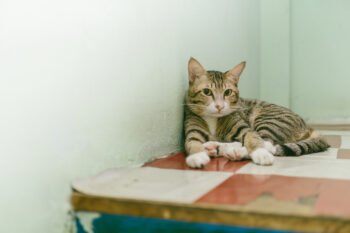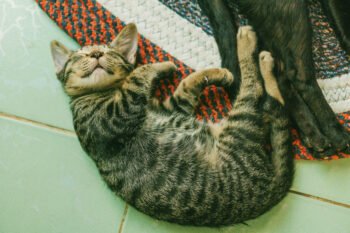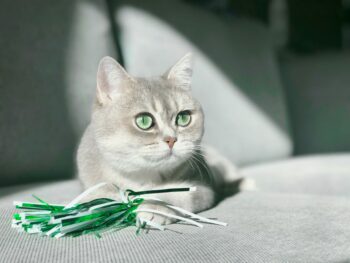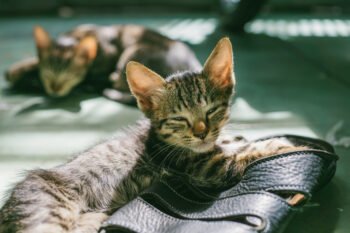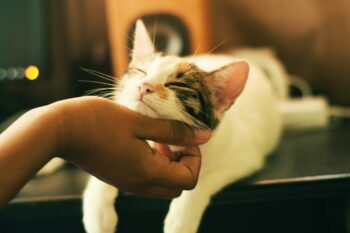The oldest, raggediest, covered-with-cat-spit toy in your house may well be the one with the most catnip inside. Yes, I’m talking about that gross thing your cat drags out from wherever she last left it (or where you last hid it) and goes nuts over, rubbing her face on it, rolling over it and licking until it’s sopping wet.
Catnip, or Nepeta cataria, a perennial herb that belongs to the mint family, tends to have that effect on cats. As Potter’s New Cyclopedia of Botanical Drugs and Preparations so nicely puts it, catnip will make your cat “frolicsome, amorous and full of battle.” Luckily, those effects generally only last about 10 to 15 minutes.
The active ingredient in catnip is an aromatic oil called nepetalactone, which acts upon kitty’s sensitive scent glands. If you give your cat loose catnip, she may eat it. However, “The ‘eating’ isn’t really the ingestion of the plant so much as the cat is mouthing the herb, pushing the leaves up against the roof of their mouth,” says Johanna Richards, the owner of Cat Nip Cafe.
Not every cat is responsive to catnip, however. And, in fact, according to Karen Overall, MA, VMD, PhD, cats in Australia are missing out entirely. “Cats in Australia don’t respond to catnip because it’s genetic,” she says. “They’ve had a six-month quarantine forever to get animals into the country, so they’ve basically had a closed gene pool.” And, interestingly, while lions will respond to catnip, tigers won’t. Age also counts. “If a kitten is less than six to eight weeks old, it will not react,” says Jeff Grognit, DVM, BSc. In fact, it may be three whole months before your cat is old enough to enjoy catnip.
Some owners worry that their cats can become addicted to or harmed by catnip. Just the opposite, says feline behavior expert Pam Johnson-Bennett. In fact, “It is possible for cats to become immune to its effects if exposed too often.” To keep your cat’s fun fresh, Bennett recommends giving catnip to your kitties no more than twice a week. As for catnip being harmful, not only do some veterinarians prescribe catnip as a way to help overweight kitties lose weight, but scientific studies conducted on cats who had taken oral nepetalactone found no evidence of harmful after-effects.
Johnson-Bennett recommends giving catnip separately to each cat in a multi-cat household, until you’re acquainted with their individual reactions. This will minimize any catnip-induced conflict. She also recommends loose, good-quality catnip, which should consist of the leaves and blossoms, not stems. Some people like organic catnip better, saying that it contains a higher amount of nepetalactone.
One of the best things about catnip is that not only can it be easily grown in your garden or on your windowsill (be prepared for squished and nibbled plants), but you can enjoy it yourself as a calming tea. Catnip has long been used in human herbal medicine for its sedative effects. Just be careful that kitty doesn’t do to your mug what she just did to that catnip-stuffed sock.

